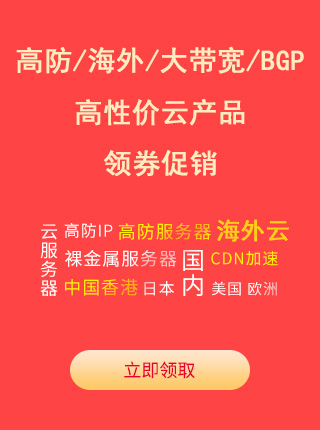TensorFlow物体检测如何实现,操作及过程是什么
Admin 2022-07-16 群英技术资讯 929 次浏览
 很多朋友都对“TensorFlow物体检测如何实现,操作及过程是什么”的内容比较感兴趣,对此小编整理了相关的知识分享给大家做个参考,希望大家阅读完这篇文章后可以有所收获,那么感兴趣的朋友就继续往下看吧!
很多朋友都对“TensorFlow物体检测如何实现,操作及过程是什么”的内容比较感兴趣,对此小编整理了相关的知识分享给大家做个参考,希望大家阅读完这篇文章后可以有所收获,那么感兴趣的朋友就继续往下看吧!Google发布了新的TensorFlow物体检测API,包含了预训练模型,一个发布模型的jupyter notebook,一些可用于使用自己数据集对模型进行重新训练的有用脚本。
使用该API可以快速的构建一些图片中物体检测的应用。这里我们一步一步来看如何使用预训练模型来检测图像中的物体。
首先我们载入一些会使用的库
import numpy as np import os import six.moves.urllib as urllib import sys import tarfile import tensorflow as tf import zipfile from collections import defaultdict from io import StringIO from matplotlib import pyplot as plt from PIL import Image
接下来进行环境设置
%matplotlib inline
sys.path.append("..")
物体检测载入
from utils import label_map_util from utils import visualization_utils as vis_util
准备模型
变量 任何使用export_inference_graph.py工具输出的模型可以在这里载入,只需简单改变PATH_TO_CKPT指向一个新的.pb文件。这里我们使用“移动网SSD”模型。
MODEL_NAME = 'ssd_mobilenet_v1_coco_11_06_2017'
MODEL_FILE = MODEL_NAME + '.tar.gz'
DOWNLOAD_BASE = 'http://download.tensorflow.org/models/object_detection/'
PATH_TO_CKPT = MODEL_NAME + '/frozen_inference_graph.pb'
PATH_TO_LABELS = os.path.join('data', 'mscoco_label_map.pbtxt')
NUM_CLASSES = 90
下载模型
opener = urllib.request.URLopener() opener.retrieve(DOWNLOAD_BASE + MODEL_FILE, MODEL_FILE) tar_file = tarfile.open(MODEL_FILE) for file in tar_file.getmembers(): file_name = os.path.basename(file.name) if 'frozen_inference_graph.pb' in file_name: tar_file.extract(file, os.getcwd()) 将(frozen)TensorFlow模型载入内存 detection_graph = tf.Graph() with detection_graph.as_default(): od_graph_def = tf.GraphDef() with tf.gfile.GFile(PATH_TO_CKPT, 'rb') as fid: serialized_graph = fid.read() od_graph_def.ParseFromString(serialized_graph) tf.import_graph_def(od_graph_def, name='')
载入标签图
标签图将索引映射到类名称,当我们的卷积预测5时,我们知道它对应飞机。这里我们使用内置函数,但是任何返回将整数映射到恰当字符标签的字典都适用。
label_map = label_map_util.load_labelmap(PATH_TO_LABELS) categories = label_map_util.convert_label_map_to_categories(label_map, max_num_classes=NUM_CLASSES, use_display_name=True) category_index = label_map_util.create_category_index(categories)
辅助代码
def load_image_into_numpy_array(image): (im_width, im_height) = image.size return np.array(image.getdata()).reshape( (im_height, im_width, 3)).astype(np.uint8)
检测
PATH_TO_TEST_IMAGES_DIR = 'test_images'
TEST_IMAGE_PATHS = [ os.path.join(PATH_TO_TEST_IMAGES_DIR, 'image{}.jpg'.format(i)) for i in range(1, 3) ]
IMAGE_SIZE = (12, 8)
with detection_graph.as_default():
with tf.Session(graph=detection_graph) as sess:
for image_path in TEST_IMAGE_PATHS:
image = Image.open(image_path)
# 这个array在之后会被用来准备为图片加上框和标签
image_np = load_image_into_numpy_array(image)
# 扩展维度,应为模型期待: [1, None, None, 3]
image_np_expanded = np.expand_dims(image_np, axis=0)
image_tensor = detection_graph.get_tensor_by_name('image_tensor:0')
# 每个框代表一个物体被侦测到.
boxes = detection_graph.get_tensor_by_name('detection_boxes:0')
# 每个分值代表侦测到物体的可信度.
scores = detection_graph.get_tensor_by_name('detection_scores:0')
classes = detection_graph.get_tensor_by_name('detection_classes:0')
num_detections = detection_graph.get_tensor_by_name('num_detections:0')
# 执行侦测任务.
(boxes, scores, classes, num_detections) = sess.run(
[boxes, scores, classes, num_detections],
feed_dict={image_tensor: image_np_expanded})
# 图形化.
vis_util.visualize_boxes_and_labels_on_image_array(
image_np,
np.squeeze(boxes),
np.squeeze(classes).astype(np.int32),
np.squeeze(scores),
category_index,
use_normalized_coordinates=True,
line_thickness=8)
plt.figure(figsize=IMAGE_SIZE)
plt.imshow(image_np)
在载入模型部分可以尝试不同的侦测模型以比较速度和准确度,将你想侦测的图片放入TEST_IMAGE_PATHS中运行即可。
“TensorFlow物体检测如何实现,操作及过程是什么”的内容就介绍到这里了,感谢大家的阅读。如果想了解更多行业技术相关的知识可以关注群英网络网站,小编每天都会为大家更新不同的知识。

免责声明:本站发布的内容(图片、视频和文字)以原创、转载和分享为主,文章观点不代表本网站立场,如果涉及侵权请联系站长邮箱:mmqy2019@163.com进行举报,并提供相关证据,查实之后,将立刻删除涉嫌侵权内容。
猜你喜欢
-
Python reversed函数用于什么,简单的实例是怎样
Python内置函数-reversed函数。reversed 函数返回一个反转的迭代器。
-
如何用python制作一个水印生成器
这篇文章主要为大家详细介绍了python实现水印生成器,文中示例代码介绍的非常详细,具有一定的参考价值,感兴趣的小伙伴们可以参考一下
-
python中自动化定位元素有哪些?怎样使用?
这篇文章主要给大家分享的是python中自动化定位元素,那么python中自动化定位元素都有哪些?接下来会给大家介绍到的有find_element_by_id()、find_element_by_name()、find_element_by_class_name()、find_element_by_class_name()等等八种python自动化定位元素的用法,感兴趣的朋友就继续往下看吧。
-
曝光融合及其原理是什么,基于Python怎样实现
这篇文章主要介绍了python 使用OpenCV进行曝光融合,使用OpenCV的Exposure Fusion,曝光融合是一种将使用不同曝光设置拍摄的图像合成为一张看起来像色调映射的高动态范围(HDR)图像的图像的方,下文更多详细内容介绍,需要的小伙伴可以参考一下
-
python中tkinter模块的使用实例分享
tkinter 是 Python 的自带的GUI库,这篇文章就主要和大家分享tkinter模块的使用,本文实例具有一定的借鉴价值,需要的朋友可以参考学习。
成为群英会员,开启智能安全云计算之旅
立即注册关注或联系群英网络
7x24小时售前:400-678-4567
7x24小时售后:0668-2555666

24小时QQ客服

群英微信公众号
CNNIC域名投诉举报处理平台
服务电话:010-58813000
服务邮箱:service@cnnic.cn
投诉与建议:0668-2555555
Copyright © QY Network Company Ltd. All Rights Reserved. 2003-2020 群英 版权所有
增值电信经营许可证 : B1.B2-20140078 粤ICP备09006778号 域名注册商资质 粤 D3.1-20240008



